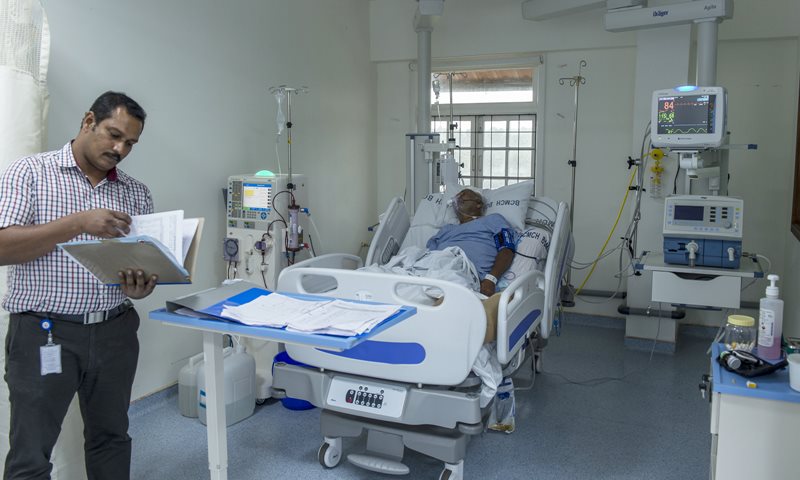What is the cost of treating oral cancer in India?
India accounted for a third of the global incidence of cancer in 2020 when Rs. 2,386 crores was spent on oral cancer treatment alone, paid for by insurance schemes, government and private sector spending, out-of-pocket payments and charitable donations.


Early detection strategies leading to even 20 per cent reduction in advanced stage disease could save almost Rs 2.5 billion annually, the study suggested.
India accounted for almost a third of the global incidence of cancer last year, in 2020. Cancer, according to the World Health Organization (WHO), is the second leading cause of death globally, with approximately 70 per cent cases occurring in low and middle-income countries.
In India, oral cavity cancer, is found to be the most common among men.
“As per the GLOBOCAN statistics, the rate of new cases being diagnosed has increased by a staggering sixty eight per cent in the past two decades alone, making it a real public health crisis,” said RA Badwe, director, Tata Memorial Center, Mumbai. (GLOBOCAN is an online database providing global cancer statistics and estimates of incidence and mortality in 185 countries for 36 types of cancer, and for all cancer sites combined.)
A team from the Tata Memorial Centre, headed by Pankaj Chaturvedi, conducted a survey and analysis to provide information for policy makers that make appropriate allocation of resources towards cancer.

The Tata institute conducted the first ever study in India where such estimates were calculated, utilising a bottom-up approach and data was collected prospectively for each service as it was used.
The study also revealed how, even without taking into consideration inflation, cancer treatment will result in an economic burden on the country to the tune of Rs 237.24 billion over the next ten years.
The enormous burden of cancer treatment
According to Badwe, low accessibility to health services, poor awareness and lack of resources resulted in a majority of the patients coming to hospitals when the disease was in an advanced stage, which made it difficult to treat.
The implications of having cancer extends far beyond the physical manifestation of the disease. Most of those who do receive some forms of treatment invariably have to give up their jobs and are forced to become an economic burden on their friends and family. Even patients with health insurance and/or government aid, typically seen as immune to the cost of healthcare, face serious challenges as most schemes fall far short of the actual cost of treatment. This increases out-of-pocket expenses, pushing a significant proportion of the patients and their families into a never-ending cycle of debt.

Also Read: Cancer survivor’s telemedicine centre links medics with villagers in remote areas
The merits of early screening
The study revealed that about 60-80 per cent of the patients with oral cancer visit their specialist oncologists at advanced stages. “Approximately, 10 per cent of the patients have progressive disease that makes them untreatable and they can only be offered supportive care for their symptoms,” Badwe said.
Prevention is better than cure
One of the ways to mitigate this is, quite simply, prevention. Almost all oral cancers are caused by some form of tobacco and areca nut use, either directly or indirectly.
Early detection strategies leading to even 20 per cent reduction in advanced stage disease could save almost Rs 2.5 billion annually, the study suggested.
Also, it stated that there must be screening of high risk individuals such as those who use tobacco and areca nut. Physicians, dentists, healthcare workers and institutions play a key role by following up screened patients, implementing tobacco de-addiction strategies and providing timely intervention.
At the administration and government level, stronger reforms can strengthen the existing policies around the prohibition of cancer-causing substances, building infrastructure and making that accessible to patients. There should also be evidence based insurances and reimbursements for those in need.
The data collected by Tata Memorial Centre has determined the direct healthcare costs of treating oral cancer. It sets out the per patient cost borne by a healthcare provider that is directly attributable to treating oral cancer.
Arjun Singh, Research Fellow at Tata Memorial Hospital and the lead author of the study said that the unit cost of treating advanced stages (Rs. 2,02,892 ) of cancer was found to be 42 per cent greater than when the disease was treated in its early stages (Rs. 1,17,135).
Variable costs that included consumables for surgery in advanced stages were 1.4 times higher than early stages. With the addition of additional chemo and radiotherapy to surgery, the average cost of treatment increased by 44.6 per cent.
Economic burden
Multiplying the cost per unit of early and advanced cancer as per the study’s results, India spent approximately Rs. 238.6 billions in 2020 on oral cancer treatment, paid for by insurance schemes, government and private sector spending, out-of-pocket payments and charitable donations.
This is a significant portion of the healthcare budget allocation the government made in 2019-20 towards a single disease.

